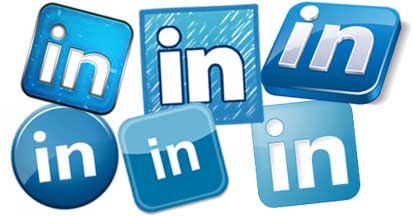Wednesday, June 29, 2016
Professional Social Media
Hello Friends!
A few thoughts about using social media for professional purposes. Dedicated business pages on sites such as Facebook, Twitter, Pinterest and Snapchat are great marketing platforms for many companies and organizations, but for most people in the U.S. professional social media means LinkedIn.
While your organization should also have a page on LinkedIn, I'm going to focus on the personal LinkedIn profile today.
One of the first things you should do after joining is to find groups to join and participate in. The purpose for joining the groups is two-way-communication (social media is...social!). What that engagement will do for you is to start establishing your brand as someone with expertise in your field, while at the same time you are learning from others in your field. The LinkedIn groups you join could be of your peers or aspirational peers. While I follow a lot of different groups (because I'm just really curious about many different fields), the better strategy would be to limit your group participation, comments and posts to areas of your professional (or aspirational) expertise.
For nonprofit professionals, I'd like to suggest joining groups such as the Nonprofit Leadership group, which is a resource for nonprofit executives to share their experiences and find solutions in a safe, noncommercial forum. A group that is well matched to my pursuits is the Social Media for Nonprofits forum, where nonprofits participating in the groundswell of social media can go for support and ideas.
As nonprofit professionals we are in the unique intersection of business and doing good. What characterises most of us is a passion for our cause. That passion usually makes for a good story; tell your story on your LinkedIn page! Show your passion and personality; don't hide behind the corporately correct, straight-jacketed voice.
Like (someone's) grandma used to say: Don't hide your light under a bushel. (I double checked the quote and realized, that it is actually Matthew 5:15. Not granma).
I recently did a reboot of my LinkedIn profile after having followed the blog Human Workplace by CEO, Liz Ryan. Link to Liz Ryan's blog. I wanted to find my own voice and tell the story of who I am and how I got to where I am, as authentically as I could. In short, I wanted to use a human voice.
Why? When looking for an organization to work or to volunteer with, I am looking for a good fit above all; an organization that appreciates transparency and authenticity would be a good fit for me.
I'm a big proponent of the human voice, but I don't use it in my resume (yet); there the bullet points and search terms still rule. Why? In my opinion a resume is your quick and dirty brochure, which hopefully leads a decision maker to take a look at your LinkedIn profile and be interested enough to get you in for an interview. But that opinion may change.
Here is a link to my new and (partially) improved LinkedIn profile.
Lea's LinkedIn Profile
Why just partially improved? So that you could see the difference in a real life profile. You'll find the headline, summary and last three jobs described in a human voice and the bottom four remain as they were before.
Can you tell the difference? What do you think about it? Which do you prefer?
Thanks for reading!
Lea
Subscribe to:
Comments (Atom)

